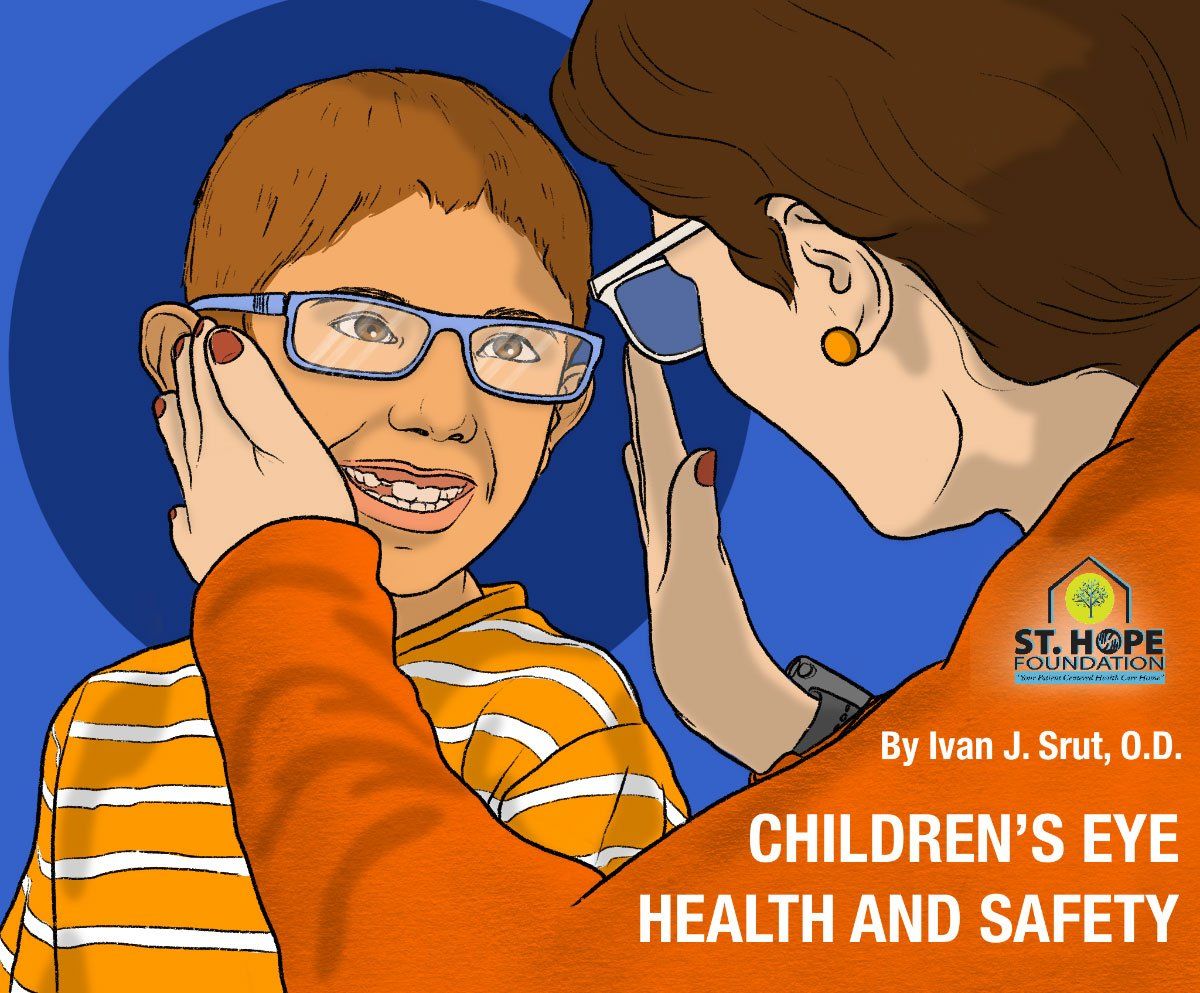Recent Posts
Children's Eye Health and Safety

Blog by Ivan J. Srut, O.D.
Chief of Optometry for St. Hope Foundation
You may or may not know that August has been designated as Children’s Eye Health and Safety month. This was started back in 1995 and strategically done since most kids start back to school in August now, rather than September! Most vision professionals agree that the age of 3 is a good time to begin annual vision screenings or exams. Some start very early (around 6 months) to detect any major issues with a child’s eyes. The screenings/exams can help to detect myopia (nearsightedness), hyperopia (farsightedness) and astigmatism (when the cornea or lens of the eye have an irregular curvature and cause blurry or distorted vision). Other eye health conditions that can be detected include:
Strabismus (crossed eyes): is when the eyes don’t line up properly. The child may have eyes that are looking in different directions. This is seen in about 4% of children 6 years or younger. It tends to run in families and can possibly be corrected with glasses or surgery.
Amblyopia (lazy eye): is when there is a problem with visual development in infancy or early youth where one eye sees better than the other. The brain is not receiving the same amount of stimulation from both eyes so it tends to “ignore” what it sees with the worst eye. Corrective eye wear, patching, and possibly surgery can help, depending on the cause.
Ptosis (droopy eyelid): this is when the upper eyelid is lower than it should be, often caused by issues with the muscle(s) that raise the eyelid(s). An issue with the nerves can also cause this. Eyelid lift surgery can help repair this problem.
Color Deficiency (color blindness): most people will experience similar color perception, but others will not. They may not see colors the way the others do, but may not be aware of it. Red-green color blindness is the most common form. Children may have difficulty identifying colors of things with this problem, often making errors when identifying colors.
Parents should look for warning signs that their children are having issues with their eyes such as:
● Sitting close to the TV or holding a book too close
● Squinting
● Tilting their head
● Frequent rubbing of the eyes
● Short attention span (dependent on the child’s age)
● Turning of an eye in or out
● Sensitivity to light
● Difficulty with eye-hand-body coordination when playing ball or bike riding
● Avoiding coloring activities, puzzles and other detailed activities
● Disinterest in reading or viewing distant objects
● Poo rschool performance–even in a pre-school environment
Eye Safety: Another aspect of a child’s eye health is safety. Unfortunately eye injuries are the leading cause of vision loss, and much of it is preventable. Many are sports related and can be prevented by the child wearing protective eyewear with polycarbonate (strong, shatter resistant material) lenses. Most sports can result in an eye injury! Another common eye injury for children is caused by playing with toys not meant for their age group, like things that launch (missiles), fireworks, darts, bows and arrows, and guns that fire projectiles. Make sure that kids don’t lose their vision from carelessness or playing with inappropriate toys for their ages.
Until next time…









